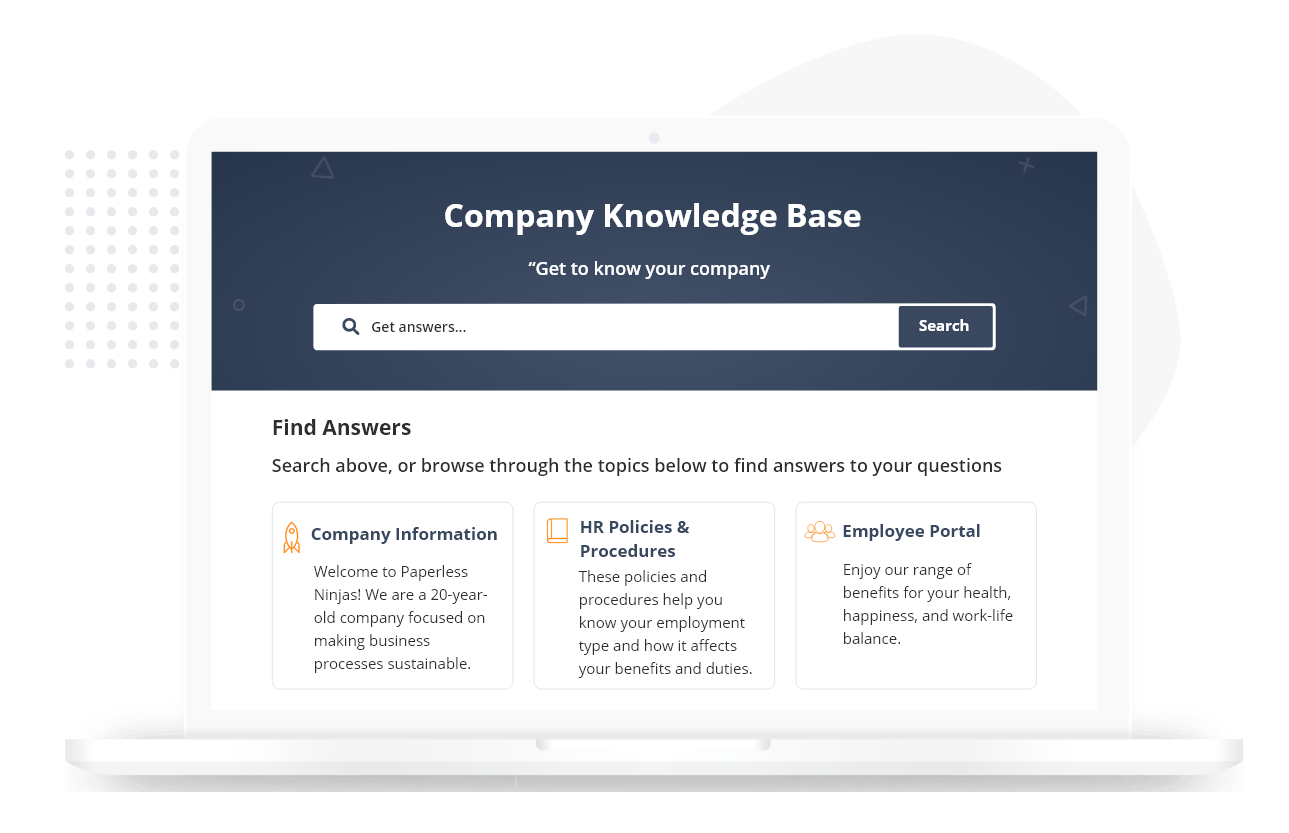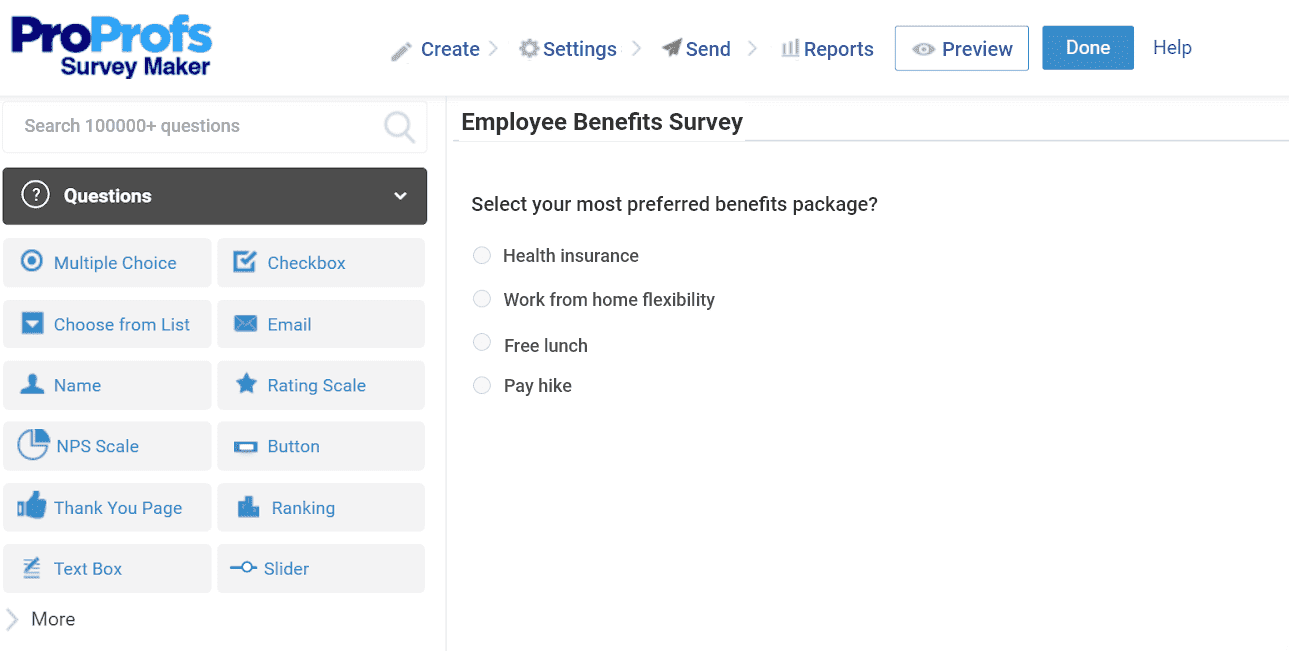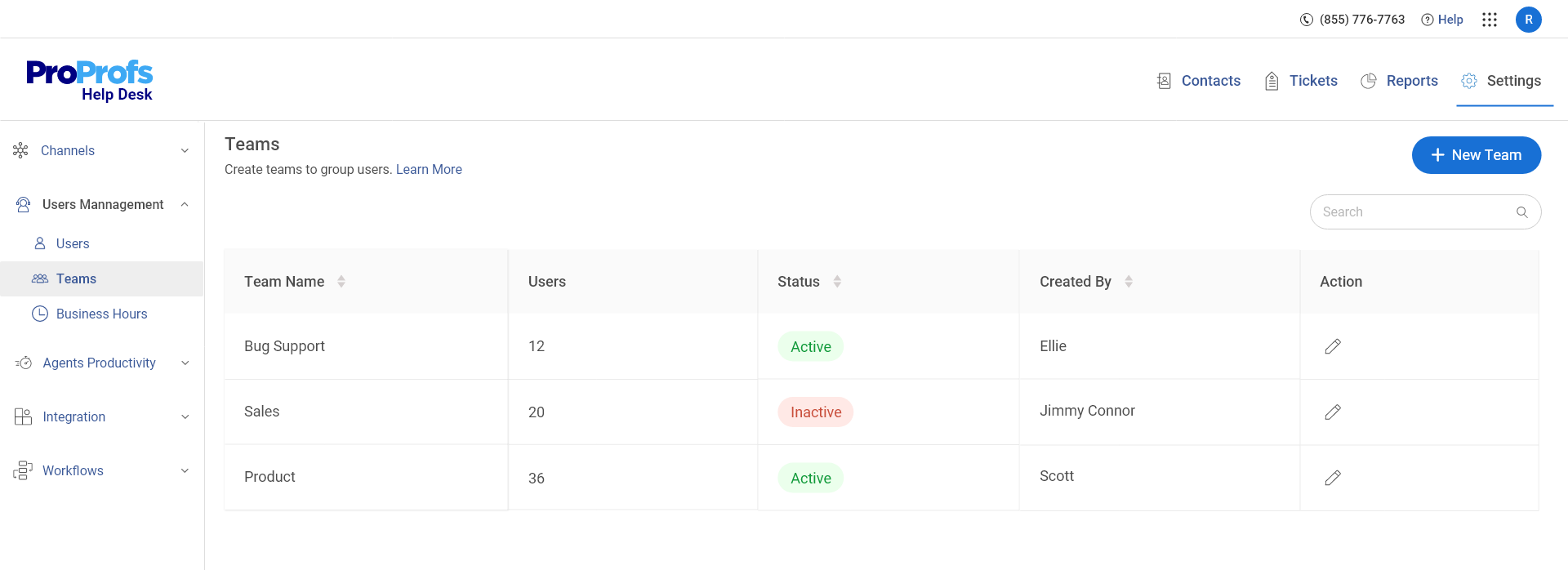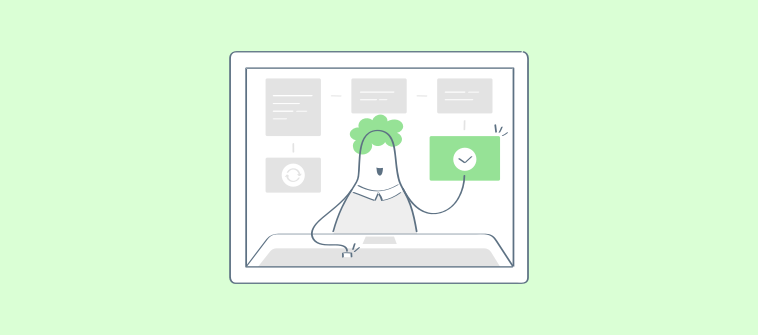In today’s fast-paced business world, information flows rapidly, making it essential to improve internal customer service for businesses.
Business success isn’t just about serving your customers well but also about working well with your team. However, some businesses still underestimate this.
A Salesforce study shows that 86% of employees cite ineffective communication and lack of collaboration as the leading causes of workplace failures.
So, how can you enable top-notch internal customer service in your company? By utilizing the power of knowledge base software tools. Let’s discuss the same in detail.
What Is Internal Customer Service?
Internal customer service is the support provided among your colleagues within your company. It’s about treating co-workers like your first customers, meeting their needs, and facilitating their success.
It’s about the experience employees have while doing their jobs, which includes solving their problems, managing internal requests, and fostering a positive work environment. The goal is to make work hassle-free for employees, keeping them happy and motivated.
Imagine this: You’re a sales professional, and your external customers buy your products or services. Your internal customers could be the content team providing sales content, the product team developing new features, or the IT people helping your tools work smoothly.
The internal customer service team ideally handles basic and complex employee queries, such as signing up for an official Microsoft account, troubleshooting slow-loading HR portals, or resolving issues with the help desk dashboard.
Why Is Internal Customer Service Important?
Somebody wise once said, “Charity begins at home.” This means you should prioritize caring for your family and friends before helping others.
Similarly, for your organization, your people are your family. You can create a positive work environment and build a solid brand image by providing efficient internal customer service to your workforce.
This facilitates a snowball effect, bringing multiple benefits to your business, such as improved employee satisfaction and productivity. Other benefits include:
Making Teams More Productive
Improving your internal customer service via knowledge base software can significantly benefit you by enabling a centralized repository of information. Your teams can access this central knowledge hub to find answers to common questions (FAQs) and solve problems independently.
It will help you reduce the workload on your internal customer service team and enable them to focus on more complex issues. It also motivates your workforce to take charge of their learning and development, increasing productivity and job satisfaction.
Identifying and Fixing the Gaps in Knowledge and Skills
Documenting and saving internal service requests are essential to internal customer service. This helps your teams identify individual and team-wide gaps in the accumulated knowledge and skills. Initial service requests covey that a teammate doesn’t know something or know how to do something.
The later engagements between the service provider and the recipient will provide further insights into the customer’s current knowledge and abilities about the task.
This improves knowledge-sharing areas like employee onboarding and training, standard operating procedures, workflows, routines, internal documentation, and more.
Strengthening Team Culture
Implementing internal customer service helps you focus on the significance of serving one another to achieve a common goal. It involves different departments moving away from seeing their duties as tasks to be checked off a list. Strategic internal customer service also facilitates additional opportunities for your providers and team members to interact as a unit.
Activities as simple as having more face time — even remotely — can contribute toward building rapport between team members who otherwise may not interact much.
Increasing Team Satisfaction and Loyalty
When your people treat one another with respect and support, it creates a workplace where team members feel valued and appreciated.
This uplifts their morale, leading to higher job satisfaction and a positive outlook toward their work and the company. It nurtures camaraderie and loyalty, extending beyond individual tasks.
Effective internal customer service also improves employee retention, vital for long-term organizational success. A knowledge-sharing platform helps by providing easy access to resources, encouraging collaboration, and fostering a sense of belonging.
Improving Business Performance
Exceptional internal customer service is more than just customer satisfaction; it considerably impacts the overall business performance. Businesses focusing on internal customers enjoy various performance benefits like increased productivity, where teams access resources efficiently, reduce search time, and shift focus on value-added tasks.
Efficient internal customer service streamlines workflows and improves communication, reducing misunderstandings and redundant efforts. This helps in efficient decision-making, effective problem-solving, and faster project completion.
A knowledge base software platform plays an essential role by centralizing information, promoting collaboration, and driving innovation, ultimately resulting in cost savings, increased productivity, and enhanced competitiveness.
10 Best Practices for Impeccable Internal Customer Service
Once you begin implementing strategic and systematic internal customer service (ICS) processes, you should consider several key steps. Although there are many similarities between external customer service best practices and ICS, it’s important to remember that ICS has unique variations that set it apart.
With that in mind, let’s discuss some internal customer service best practices to make it work for your teams.
Allow Your Teams to Reach You Across Multiple Channels
Adopting a multi-channel approach allows employees to reach the support team through their preferred channel, email, phone, chat, or ticketing.
This diverse approach not only makes internal customer service more flexible and efficient but also helps to avoid the burden on a single platform and ensures that challenges of varying complexity can be solved effectively.
For example, live chat is an efficient solution for resolving fundamental issues quickly, whereas a help desk ticketing system is better for addressing complex technical problems within a specified timeline.
By enabling multiple channels for employees to connect with the support team, you can streamline workflows and simplify problem-solving for your team.
Watch this insightful video to learn more about delivering an omnichannel customer experience.
Provide 24×7 Assistance With an Internal Knowledge Base

An internal knowledge base can be a beneficial resource for your people when they need to solve problems quickly and efficiently.
This central hub provides detailed knowledge of company policies, work processes, troubleshooting tips, and frequently asked questions (FAQs), helping your teams resolve fundamental issues independently without contacting the support team.
For example, if a salesperson has trouble logging into their CRM account, they can consult the internal knowledge base to troubleshoot and resolve the issue in minutes.
This cuts the resolution time and frees the support team to focus on more sophisticated topics. By creating an internal knowledge base, you can empower your team members to solve problems independently and improve overall productivity.
Watch this video to learn more about creating an internal knowledge base.
Set Achievable Expectations from the Start
Establishing reasonable expectations from the outset can help prevent disappointment.
People within your organization may have high expectations regarding the speed and quality of solutions, which can be difficult for your support team to cope with, leading to project delays and workflow disruptions.
By providing your people with a specific timeline based on the complexity of their issue, they can better plan their workday.
Likewise, transparency is vital if a backlog of tickets is awaiting action. Being open about these facts can help build smoother workflows and facilitate a more understanding and cooperative work environment.
Regularly Ask for Employee Feedback

Despite having a dedicated internal support team, your employees may only sometimes be satisfied with the experience.
In such situations, taking responsibility and actively seeking team feedback to find improvement areas is essential.
Collecting feedback through surveys after a ticket is closed can provide essential insights into the support team’s performance and help them learn from their shortcomings.
If the input is positive, that’s great! If not, the team can follow up until the problems are resolved. By actively seeking and responding to your teams’ feedback, you can improve your internal customer service and facilitate a more positive work environment.
Utilize Help Desk Data to Identify Improvement Opportunities

An internal help desk can give you valuable data on the performance of your support team and the employee satisfaction.
This centralized platform helps manage internal requests and tracks KPIs (key performance indicators) like average rating, open and closed tickets, resolution time, and new tickets.
These real-time insights help you to closely monitor the performance of your internal support team and measure it against your service level agreements (SLAs). The collected data can also identify trends in frequently raised tickets and areas of concern for employees.
By evaluating this data, you can identify topics for self-help articles to add to your internal knowledge base and further help your people resolve issues independently.
Prepare a Service Desk Schedule for Each Day
Service reps sharing their daily work schedules across teams can promote transparency and help employees plan when to contact the support team for assistance. It helps to avoid unnecessary wait times and reduces the burden.
By providing a well-planned schedule, staff members can identify the ideal time to connect with the internal customer service department and have their concerns addressed.
The service desk schedule can be posted in the internal knowledge base or shared via email with all the teams, ensuring everyone is on the same page, and the schedule is easily accessible.
Be Friendly and Respectful During the Interactions
Respecting your teammates’ concerns is essential for effective internal customer service. Your support team should understand the complexities of different issues and treat each as a high priority, regardless of how often an employee contacts them.
Using polite language such as “please,” “thank you,” “I understand,” and “don’t worry” should become the standard to steer conversations in a positive direction and ensure that employees feel satisfied with the outcome.
Maintaining a friendly tone in all interactions can help your teams feel more comfortable sharing their concerns without fear of judgment.
Educate Teams on the Root Cause of Problems
When similar issues arise repeatedly and disturb your teams’ workflows, educating employees on how to resolve these issues independently becomes an intelligent practice.
After resolving a problem, your internal support team can explain the root cause and the steps they took to fix it, preparing others to overcome similar issues.
In cases where self-help articles or FAQs are available in the internal knowledge base, your support team can boost the problem-solving process by sharing the relevant resources with others via email or chat.
Choose the Right Internal Customer Service Tools
Sometimes, having a dedicated team is not enough; you also need the support of powerful customer service tools to optimize your support processes.
For instance, implementing a modern help desk tool with a shared inbox can streamline the ticketing system for your employees and the internal support team. All tickets are consolidated centrally, making it easy for your internal support team to track, prioritize, and collaborate on resolving them.
Implementing a robust knowledge base software can encourage employee self-service by helping you create self-help platforms such as employee handbooks, wikis, training documentation, and an internal knowledge base.
They are fully customizable and come with ready-to-use templates, allowing you to start quickly. Live chat is another valuable tool with features like chatbots, canned responses, and chat routing that provide real-time responses to employee queries.
Pro Tip: Combining a help desk, knowledge base, and live chat can provide a holistic, 360° support experience. This allows your team members to resolve their issues through self-service, chat, or ticketing – whichever platform they find most convenient.
Treat Employees With the Same Empathy As Your Customers
Your employees are your first and most important customers. They work diligently to help you earn the trust of external customers, and empathy is a crucial factor in achieving customer satisfaction.
Just as your people practice empathy to make customers feel heard, your internal support team should also approach employee concerns with understanding.
There may be times when employees become frustrated due to repeated issues that hinder their work. In such situations, your internal support team must remain calm and empathetic rather than take the frustration personally.
By understanding where the employee’s frustration is coming from, the support team can work towards finding a practical solution. This shows your employees that you genuinely care about their well-being and are committed to supporting them.
What Is the Difference Between Internal and External Customer Service?
The primary difference between internal and external customer service lies in their focus.
Internal customer service revolves around supporting your employees within your organization, while external customer service focuses on assisting your external customers.
Examples of internal customer service include the following:
- IT help desk to help your employees resolve technical issues such as device repair, account sign-ups, troubleshooting, and internet problems
- The HR department assists your employees with queries about leaves, onboarding, reimbursements, and other HR-related matters
In contrast, external customer service is about assisting your customers when they encounter problems or have questions.
The primary function of an external customer service team is to assist customers with issues such as software sign-ups, product features, returns, refunds, and cancellations.
Goals:
Internal customer service focuses on improving your internal processes, collaboration, and overall employee satisfaction.
External customer service facilitates customer satisfaction to build loyalty, retain business, and drive revenue.
Metrics:
External customer service usually measures success through Net Promoter Score (NPS) and Customer Satisfaction (CSAT).
Internal customer service may focus on metrics like response time to inquiries, knowledge base utilization, and employee feedback.
Impact:
Exceptional external customer service directly impacts the company’s bottom line.
Outstanding internal customer service indirectly improves external customer service by creating a more efficient and collaborative work environment.
Internal Customer Service Trends and Statistics
The following trends highlight the importance of investing in robust internal customer service software tools and practices. It shows how doing so can support employees, improve collaboration, and enhance organizational performance.
Remote Work
With the rise of remote work, internal customer service tools and practices have become even more essential. A survey by Buffer found that 77% of professionals say that their company has systems/tech for remote team collaboration and communication.
According to McKinsey, more than 20% of the workforce could work remotely three to five days a week as effectively as possible if working from an office.
This shift towards remote work significantly impacts internal customer service, so you must adapt the tools and practices to support a distributed workforce.
Knowledge Sharing
A recent report by Social Media Today reveals that 70% of customers prefer using a company’s website to get answers to their questions rather than reaching out via phone or email.
Efficient knowledge sharing can enhance productivity, innovation, and employee engagement. No wonder businesses are rapidly investing in tools such as internal knowledge bases and collaboration platforms. So, you should do it, too.
Employee Satisfaction
A study by Gallup says that highly engaged teams show 21% greater profitability. Effective internal customer service contributes majorly to employee engagement and satisfaction.
You can improve employee satisfaction and retention by empowering your teams with the support they need to perform their jobs effectively.
Knowledge Base Utilization
A survey by Intercom found that 77% of business leaders plan to invest more in self-serve support, such as FAQs and knowledge bases.
This trend is also evident in internal customer service, as employees increasingly prefer self-service options to resolve issues independently.
By providing your teams with a user-friendly internal knowledge base, you can empower them to solve problems independently and reduce the workload on their internal support teams.
Employee Turnover
Poor internal customer service can skyrocket employee turnover rates.
According to the Society for Human Resource Management (SHRM), the cost of replacing an employee can be as high as 50-60% of their annual salary.
Investing in efficient internal customer service tools and practices can improve employee retention and reduce turnover costs.
Examples of Internal Customer Service
The following famous examples of internal customer service show how they support employees, improve productivity, and enhance overall organizational performance.
1. Google
Google is famous for its excellent internal customer service practices. They provide employees access to a comprehensive knowledge base called “Google University,” which has training materials, resources, and internal forums for knowledge sharing.
This helps employees to learn and grow within the company and to find the information they need to perform their jobs effectively.
2. Microsoft
Microsoft’s “My Microsoft” portal serves as a one-stop shop for employees, enabling a variety of resources, from technical documentation to HR policies.
This ensures that employees can quickly find the necessary information, reducing the time and effort required to resolve issues.
Watch this insightful video on creating technical documentation.
3. RapidMiner
RapidMiner helps its internal customers quickly get where they need to go with an online chatbot called MarlaBot.
The first simple question of asking the answer-seekers what brought them to RapidMiner points them in the right direction to automatically answer questions or connect them with a human sales rep without wasting time.
Foster a Culture of Employee Empowerment in Your Organization
Your employees are the backbone of your business because they play an integral role in shaping its growth and success.
While most businesses are hyper-focused on catering to their customers, it’s equally important to prioritize the needs and satisfaction of their employees. Overlooking this can lead to employee frustration and disappointment, ultimately impacting their performance and your reputation.
Implementing practices such as adopting the right internal customer service software tools, demonstrating empathy, setting clear expectations, seeking feedback, and maintaining respect can catalyze an employee-centric culture.
ProProfs Knowledge Base can help you create an extensive internal knowledge base where your teams can find answers to their questions quickly and efficiently. It has a rich, AI-enabled text editor with pre-built prompts and support for multiple authors.
It supports over 90 languages, allowing you to create a knowledge base that caters to a diverse, global audience.
FREE. All Features. FOREVER!
Try our Forever FREE account with all premium features!







